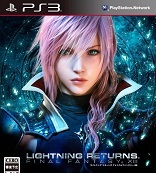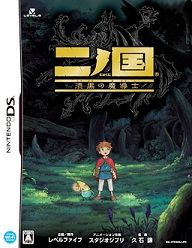« RPG Deals 1/19 – 1/25 | Main | RPG Deals 1/26 – 2/1 »
RPGLand Interviews Yoshinori Terasawa about Dangan Ronpa
By Janelle | January 26, 2014 at 9:47 am
NIS America recently announced that the Japanese sleeper hit Dangan Ronpa would be coming to the West at last. During the Tokyo Game Show and courtesy of NISA, we had an opportunity to sit down with Yoshinori Terasawa of Spike Chunsoft and ask him about the game.
RPGLand: Which of the following was the biggest inspiration for Dangan Ronpa: alcohol, your childhood nightmares, or tears of the innocent?
Yoshinori Terasawa: Wow, what a hard question! Uhhh…
RPGLand: The game kind of has that feeling, so…
Mr. Terasawa: Probably booze.
RPGLand: But seriously, we were curious about what sorts of influences Dangan Ronpa draws from, whether it’s other games, movies, or other media, because it obviously seems to draw from a diverse number of sources.
Mr. Terasawa: Well, as for movies, definitely Saw, Cube, and for a Japanese example, Battle Royale. We took a lot of inspiration from the idea of a “closed-circle mystery”*. The scriptwriter, a man named Kodaka, is a big fan of mysteries. So from those influences we mentioned earlier, and the writer’s love of mysteries, this title was born.
Closed-circle mystery: a subgenre of mysteries where all the suspects and evidence, for whatever reason, are isolated from the outside world, limiting possible solutions to suspects and evidence only in the immediate area. Instead of searching for unknown perpetrators, a detective must determine which of several known suspects, all usually with motives and alibis, could have committed the crime.
RPGLand: A game with a story like this needs strong characters to succeed. How did the team go about making characters that players could get invested in? A mystery like this is more fun when players think “Oh, I hope that person didn’t do it,” or “I want that guy to die!” or something.
Mr. Terasawa: There are only 15 characters, so the goal was to make characters extremely iconic, and make it easy for players to know which one is which. The school in the story is for super-gifted children, so for each character to be unique, each character has a specific talent or skill that they’re good at. By doing that, we figured that it would be easy for the players to invest themselves in the characters, and that it would be easy for the players to know the characters very well. Our desire was to make it feel as though any one of the 15 could be the main character.
RPGLand: During the press event, you mentioned that you were worried about whether the game was appropriate for western audiences. Was there anything you thought might be a really big problem, and was anything cut that might have been too out there?
Mr. Terasawa: First of all, nothing was cut. It’s all there!
Secondly, in terms of the game’s content, there are execution scenes. These are highschool students: in essence, children. Even more so than Japan, we figured that the West has more of a taboo against that. All questionable content aside, this was originally a PSP game, and at the time that the game was made, there wasn’t a large market in the west for PSP games, so that was another factor.
RPGLand: If the taboo against killing children could have caused problems, why make the characters children in the first place? Why not find some excuse to throw adults into this kind of situation together?
Mr. Terasawa: Well, high school students are the easiest for people to identify with and project themselves onto. It’s easy for most people to put themselves in the shoes of a high school student. Most people were, at some point in their lives, a high school student. And in terms of the market, most people who own PSPs are high school age and above, so that would be the easiest way to reach that market. Also, making the characters adults could have been an option, but for those players who weren’t adults yet, it might be hard for them to understand some things or relate to adult situations.
RPGLand: If the Dangan Ronpa series is successful in the west, I assume the sequels would start becoming regular releases for the west as well?
Mr. Terasawa: Well, if it’s a success, then absolutely! Absolutely, we’d love to bring the games to a wider audience. Just as long as it’s OK with NISA.
NISA: Yeah, of course.
RPGLand: Thank you very much for taking the time to speak with us today. Do you have any final messages for people who are interested in the game?
Mr. Terasawa: Well, visual novels are a genre that never really caught on in the west, and in terms of Dangan Ronpa, a lot of care was taken to make it a lot more than the average visual novel. We hope that everyone out there who’s a little bit curious–or even if they’re not!–to just try it once, to see what kind of game visual novels are and just how good they can be. Our message to those people would be: please just pick it up and play it!
Dangan Ronpa: Trigger Happy Havoc and Dangan Ronpa 2: Goodbye Despair are available now on PS Vita.
Topics: Dangan Ronpa, Interviews









